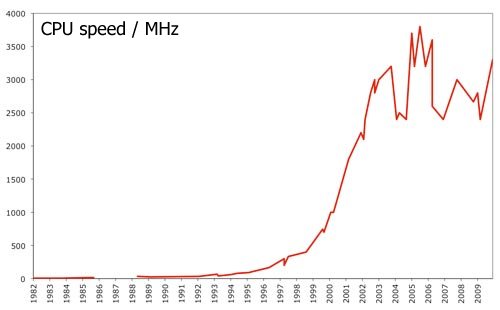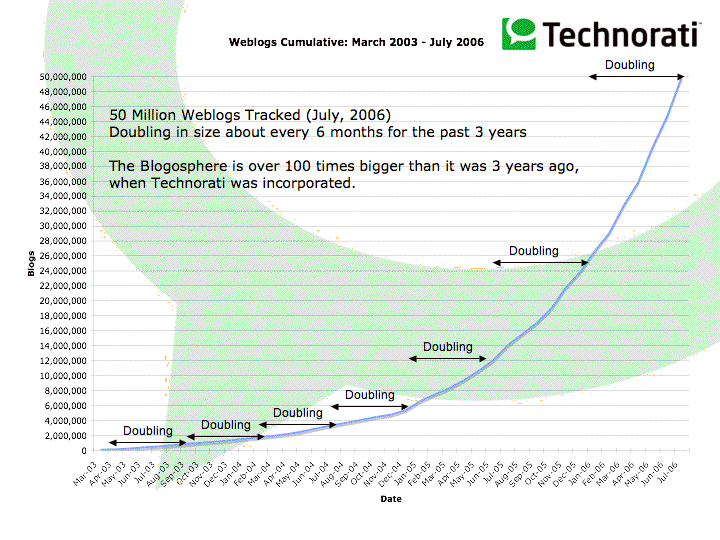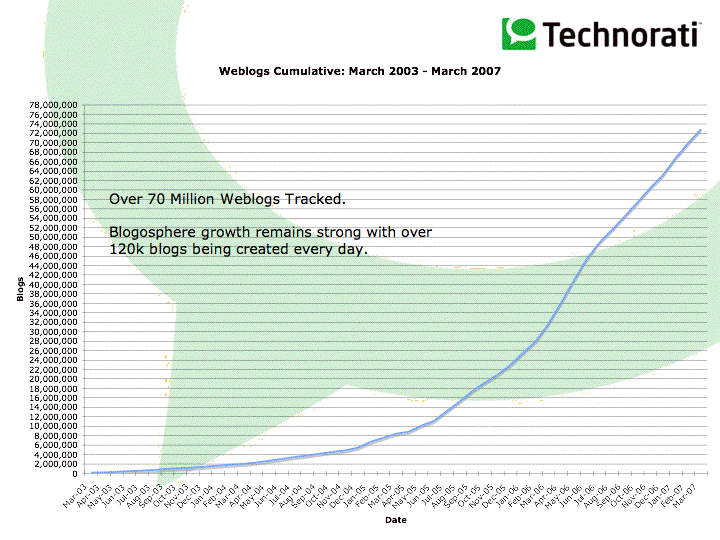 Going Sigmoidal
CPU speed is a pretty fundamental metric of progress in developing computer hardware. Price/performance is another important metric. However, CPU speed limits the performance of many "serial bound" algorrithms. Logistic growth curves are ubiquitous in biological systems - where resources are initially abundent, but are then exhausted. Other phenomena within the domain of IT exhibit these types of growth curve. For example, blog numbers started off growing exponentially:
However, the growth flattened out in 2006:
In Jan 2011, Technorati was indexing 1,253,766 blogs in their directory. If the original doubling had continued, the figure would have been predicted to be 25,600,000,000! An exponential extrapolation would have been out by a factor of 20,418. More examples come from companies. Facebook exhibited initial exponential growh. That growth stopped in 2008. Here is its growth curve:
Here is Twitter. Its exponential growth also stopped in 2009. Here is its growth curve:
Here is YouTube. Its exponential growth stopped in 2006. It shows a more mature adoption curve: Many technological growth patterns tend to be sigmoidal - with exponential growth initially, followed by slow-down and sometimes eventual saturation. However, during the exponential phase it is not easy to know when the growth will inevitably peter out. Some have argued that technological growth will continue until it presses up against physical limits - which in many cases seem far off. However, the substantial flattening out of CPU speeds well before physical limits are reached casts significant doubt on this idea. It is too early to know with much certainty whether clock speeds will pick up again - but few forecasters predict very much growth in that area happening anytime soon. If this is a hiccup, it looks like a pretty major one.
Demand-driven growthAnother hypothesis to consider is that progress is demand-driven.Once some fraction of the people online have a blog, progress starts to slow down. With desktop computers, perhaps exponential growth lasts until some fraction of the office desktops have fast computers on them capable of running spreadsheets, word processors and databases at a reasonable speed - or until most gamers can become reasonably immersed in 3D environments. Another possibility with a demand-driven growth model, is that people mostly want computers that can think faster than they can. However, when it is the difference between a million times faster and a billion times faster, people often don't care so much. From their perspective, both produce results instantly. Demand-driven growth might pick up again in various fields - if we can start manufacturing consumers in those fields at a faster rate - or if we can somehow make consumers who are more demanding. However, the near-static number of people on the planet and their relatively fixed demands on machines may otherwise cause demand to fail to grow beyond a certain point. In that case we may find other areas where technology starts to reach saturation points.
ReferencesIt's not exponential, it's sigmoidalMax More: Singularity Skepticism: Exposing Exponential Errors Amdahl's law - the limits on parallelisation Why CPUs Aren't Getting Any Faster
|


